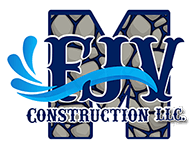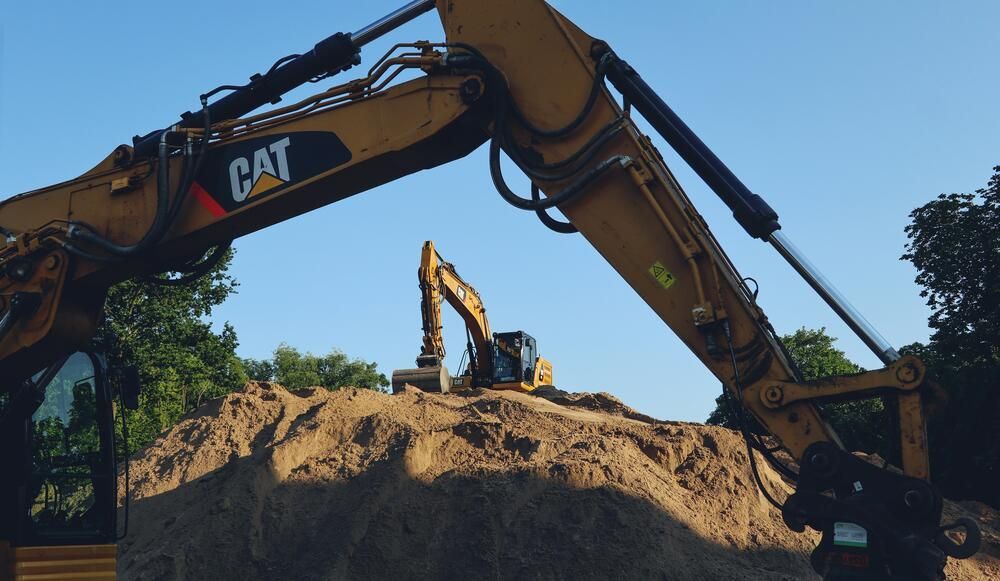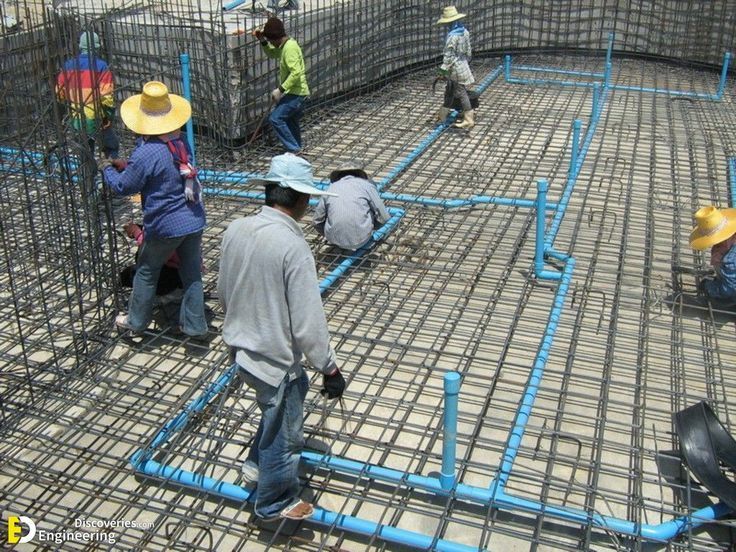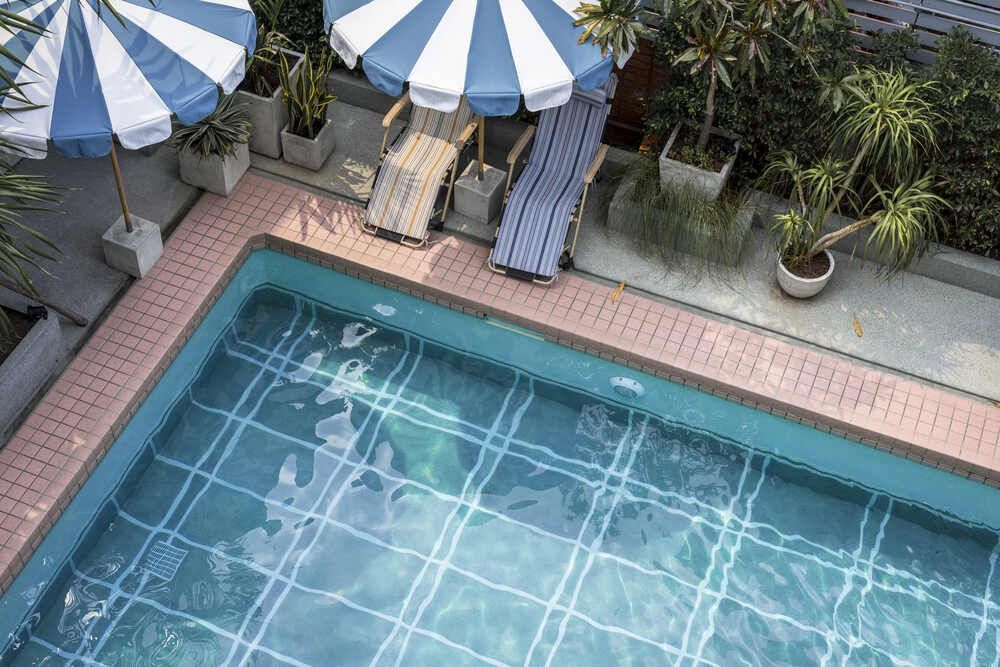No Flat Land? No Problem! Creating Stunning Pool Designs
A backyard pool isn’t limited to flat land—sloped landscapes and uneven landscapes can create stunning, multi-level designs with the right approach. While pool installation on challenging terrain requires careful landscape considerations for pools, solutions like retaining walls, infinity edges, and tiered layouts turn slopes into assets. With expert planning, even the most irregular landscapes can support a durable, visually striking pool.
Here are five stunning pool designs that make the most of sloped and uneven landscapes.
Table of Contents
- Key Takeaways
- 1. Multi-Level Pool with Cascading Waterfalls
- 2. Infinity Pool with Vanishing Edge
- 3. Elevated Deck Pool with Seamless Integration
- 4. Natural Pool Integrated into the Landscape
- 5. Plunge Pool for Compact, Sloped Spaces
- How to Manage Drainage for Pool Installation on Sloped Properties
- How to Design Pool Lighting for Sloped and Uneven Landscapes
- Frequently Asked Questions (FAQs)
- Transform Your Backyard with Expert Pool Installation — FJV Construction, Danbury, CT
Key Takeaways
✔ Multi-level pools use natural slopes to create cascading water features and distinct swimming areas without excessive excavation.
✔ Infinity pools take advantage of sloped properties to create a seamless vanishing edge effect, enhancing scenic views.
✔ Elevated deck pools eliminate the need for deep digging by building above ground, providing stability and panoramic sightlines.
✔ Natural pools integrate with uneven landscapes using rock formations and plant filtration for an eco-friendly design.
✔ Plunge pools offer a compact solution for sloped yards, requiring less space, water, and maintenance while adding a spa-like retreat.
✔ Proper drainage, including French drains and sump pumps, prevents water buildup and protects pool structures on sloped properties.
✔ Strategic lighting, such as underwater LEDs and step lights, enhances visibility, safety, and ambiance for pools on uneven terrain.
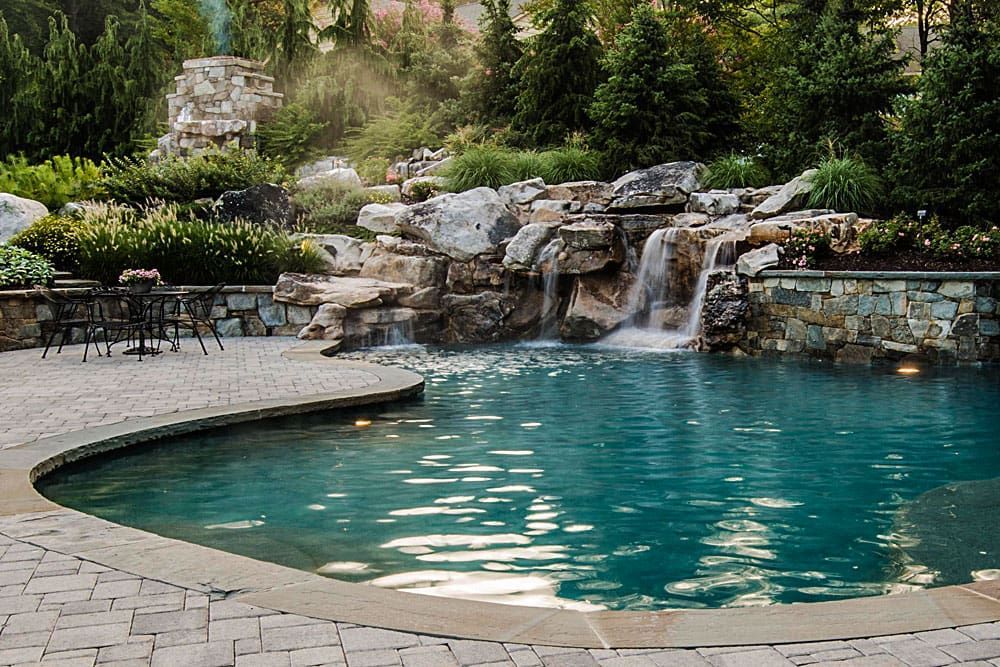
1. Multi-Level Pool with Cascading Waterfalls
Not all backyards have flat terrain, but pool installation on sloped landscapes can turn elevation changes into a design advantage. A multi-level pool with cascading waterfalls uses different heights to create visual appeal and a natural flow between sections. This design transforms uneven landscapes into a functional, luxurious retreat with seamless water movement.
Why Multi-Level Pools Work for Sloped Landscapes
- Maximizes Space on a Slope: Instead of forcing a flat design, a multi-level pool follows the natural slope, creating multiple tiers for swimming, lounging, and soaking. This prevents excessive excavation and works with the land instead of against it.
- Creates Natural-Looking Water Movement: Cascading waterfalls between levels mimic natural streams, adding a dynamic, soothing feature to the design. The gentle water flow also improves circulation, keeping the pool water fresh.
- Enhances Property Aesthetics and Value: A tiered pool turns uneven landscapes into a high-end outdoor feature that blends with the surrounding environment. This custom design increases curb appeal and raises property value.
How to Build a Multi-Level Pool on a Slope
- Use Retaining Walls for Structural Support: Concrete or stone retaining walls hold back soil and provide stability for each pool tier. This prevents erosion and ensures the pool installation remains secure over time.
- Incorporate Steps and Platforms for Accessibility: Connecting levels with steps or submerged seating areas makes it easy to move between sections. This design improves functionality while maintaining the natural flow of sloped landscapes.
- Plan for Proper Drainage and Water Flow: A sloped site requires strategic drainage solutions, such as French drains or gravity-fed water return systems. These prevent pooling in unwanted areas and support long-term durability in uneven landscapes.
2. Infinity Pool with Vanishing Edge
An infinity pool seamlessly blends into the horizon, making it an ideal choice for sloped landscapes. Instead of fighting against elevation changes, this design enhances the surrounding view by creating the illusion of water extending into the sky or landscape. With proper pool installation, even uneven landscapes can accommodate this luxurious feature.
Why an Infinity Pool is Ideal for Sloped Landscapes
- Takes Advantage of a Natural Drop-Off: A vanishing edge works best when positioned at the highest point of the slope, allowing water to spill over seamlessly. This placement enhances the illusion of an endless view, especially on properties overlooking lakes, mountains, or city skylines.
- Reduces Wind and Water Disruption: The spillover system helps regulate water movement by preventing waves caused by strong winds. A strategically designed catch basin ensures consistent water circulation, keeping the pool clean and visually smooth.
- Adds a Luxury Appeal to the Property: An infinity pool is often associated with high-end resorts, instantly elevating the backyard’s aesthetic. A well-executed pool installation on uneven landscapes increases desirability and resale value.
How to Build an Infinity Pool on Uneven Terrain
- Position the Vanishing Edge for Maximum Effect: The edge should align with a scenic focal point, such as a forest, body of water, or city skyline. The illusion works best when the drop-off extends into an open space rather than a crowded backyard.
- Design a Reliable Catch Basin Below the Edge: A lower basin must be wide and deep enough to catch and recycle the overflowing water. Proper water flow prevents excessive evaporation and reduces water loss.
- Ensure the Pool Frame Can Handle the Slope: An infinity pool requires reinforced concrete structures to support the weight of the water. A specialized engineer should assess the landscape considerations for pools to prevent structural failures.
3. Elevated Deck Pool with Seamless Integration
For properties where excavation is challenging, an elevated deck pool provides a stylish and practical alternative. This design raises the pool above the ground while integrating with existing landscape features. A well-planned pool installation makes sloped landscapes feel intentional rather than restrictive.
Why an Elevated Deck Pool Works for Uneven Landscapes
- Eliminates the Need for Extensive Digging: Instead of excavating into rocky or unstable soil, the pool is built on an engineered platform. This speeds up installation and reduces costs associated with heavy machinery and labor.
- Provides a Panoramic View from the Pool: Raising the pool enhances sightlines, allowing swimmers to enjoy scenic surroundings. This is especially beneficial for properties with uneven landscapes that overlook hills, forests, or lakes.
- Creates a Smooth Transition Between Indoor and Outdoor Spaces: A deck-level pool connects seamlessly to patios, balconies, or indoor spaces. This design moves into areas effortless and visually cohesive.
How to Build an Elevated Deck Pool on a Slope
- Use a Sturdy Steel or Concrete Frame for Support: The platform should be reinforced to bear the full weight of the pool and water. Engineers must calculate load distribution to prevent shifting or sagging over time.
- Incorporate Built-In Seating and Lounging Areas: A wraparound deck provides space for sunbathing, dining, and relaxation. Adding in-water ledges or a shallow lounging area increases usability.
- Install Secure Railings and Steps for Safety: A raised pool requires proper barriers to prevent falls and enhance accessibility. Glass railings offer unobstructed views, while non-slip steps ensure safe entry and exit.
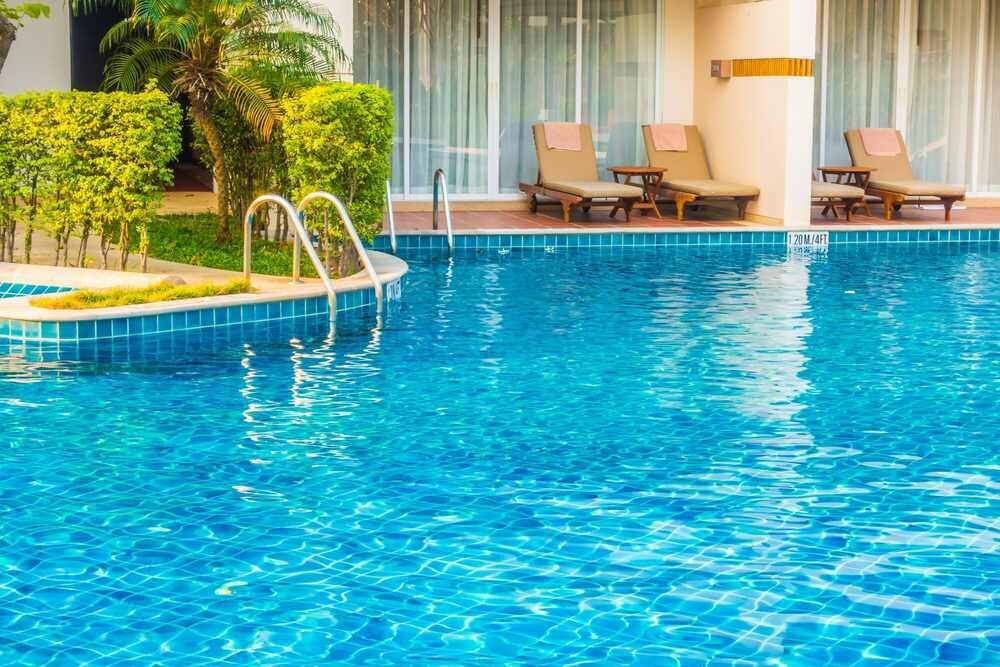
4. Natural Pool Integrated into the Landscape
A natural pool blends with uneven landscapes, using organic shapes, rocks, and plant filtration systems to create a backyard oasis. This design minimizes harsh edges and artificial materials, making the pool look like a natural water feature. With the right pool installation techniques, sloped landscapes enhance the effect by mimicking real ponds and streams.
Why a Natural Pool Suits Sloped and Uneven Landscapes
- Works with the Existing Terrain Instead of Reshaping It: The pool follows the land’s contours, avoiding unnecessary excavation. This preserves natural elements while keeping construction costs lower than traditional pools.
- Uses Plant-Based Filtration Instead of Chemicals: A natural pool incorporates aquatic plants and biofilters to keep the water clean. This eco-friendly approach eliminates the need for chlorine and reduces maintenance costs.
- Creates a Year-Round Focal Point in the Yard: Unlike conventional pools that look empty in colder months, a natural pool remains visually appealing. The surrounding landscape and water features add to the outdoor ambiance even when swimming season ends.
How to Build a Natural Pool on a Sloped Property
- Excavate Different Depth Zones for Circulation: A shallow regeneration zone with plants should be separated from the deeper swimming area. Water naturally moves between levels, filtering impurities and maintaining clarity.
- Use Large Rocks and Boulders for Structural Support: Stones reinforce the edges and act as natural retaining barriers. This helps stabilize uneven landscapes while enhancing the pool’s organic appearance.
- Plan for Overflow and Rainwater Management: Sloped properties must include drainage solutions to prevent flooding. A natural stream or overflow basin directs excess water safely away from the pool.
5. Plunge Pool for Compact, Sloped Spaces
Not every property has room for a large swimming area, but a plunge pool is a perfect solution for uneven landscapes. Small yet deep, this design provides a cooling retreat without requiring extensive space or excavation. A well-executed pool installation turns compact areas into functional, stylish retreats.
Why a Plunge Pool is Ideal for Small, Sloped Yards
- Fits into Tight or Irregularly Shaped Spaces: Plunge pools are typically smaller than traditional pools, making them perfect for sloped yards with limited room. They can be built into corners, terraces, or alongside retaining walls.
- Requires Less Water and Maintenance: With a reduced surface area, a plunge pool needs less water, fewer chemicals, and minimal upkeep. This makes it a cost-effective choice for homeowners who want the benefits of a pool without high maintenance.
- Provides Hydrotherapy Benefits in a Compact Design: Many plunge pools include spa jets for relaxation and muscle recovery. This adds a wellness component while maximizing the functionality of small outdoor spaces.
How to Build a Plunge Pool on an Uneven Landscape
- Choose a Pre-Cast or Custom Concrete Shell for Durability: A plunge pool can be installed with a prefabricated fiberglass model or a custom-built concrete structure. Both options withstand the shifting ground conditions of sloped landscapes.
- Integrate a Heating System for Year-Round Use: Since plunge pools hold less water, heating them is more energy-efficient. Adding a small heat pump or solar heater extends usability into colder months.
- Surround the Pool with Stone or Wood for a Cohesive Look: Compact pools benefit from high-quality finishes that blend with the landscape. Natural stone, wood decking, or modern tile enhance the overall aesthetic while ensuring a slip-resistant surface.
How to Manage Drainage for Pool Installation on Sloped Properties
With the average cost of installing an in-ground swimming pool at around $55,000, ensuring proper drainage is crucial, especially for pools on sloped or uneven landscapes, to prevent erosion and structural issues. Without a well-planned system, rainwater runoff and groundwater movement can erode soil, compromise structural stability, and lead to costly repairs. Working with an experienced contractor ensures the right drainage solutions are in place to protect both the pool and the surrounding landscape.
1. Install a Perimeter Drainage System to Redirect Water
Water naturally flows downhill, which can lead to pooling around the pool’s foundation if not properly managed. A perimeter drainage system—such as French drains or underground pipes—catches excess runoff and directs it away from the pool area. Professionals assess the slope’s natural drainage patterns to position these systems effectively, preventing long-term water damage.
2. Incorporate a Sump Pump for Groundwater Control
On properties with high groundwater levels, excess moisture can build up beneath the pool shell, causing structural shifting or lifting. A sump pump system removes trapped groundwater before it reaches critical levels, maintaining a stable base for pool installation on uneven landscapes. Engineers determine the correct sump pump placement to ensure continuous water management, especially in regions with heavy rainfall.
3. Design Sloped Pool Decking to Prevent Water Accumulation
Pool decking on sloped landscapes should have a slight pitch that directs water away from the pool, reducing slippery surfaces and erosion risks. Materials like permeable pavers or textured concrete allow for better drainage while enhancing poolside safety. A contractor can calculate the correct slope angle to ensure proper runoff without making the deck feel uneven underfoot.
4. Use Retaining Walls with Built-In Drainage Channels
Retaining walls not only support pools on uneven landscapes but also serve as an essential drainage solution. Built-in drainage channels or weep holes prevent water pressure buildup behind the walls, avoiding potential structural failures. An experienced builder incorporates these features to manage water flow efficiently while keeping the design visually appealing.
5. Implement a Rainwater Collection and Overflow System
A well-designed pool installation should account for excess rainwater, especially in sloped yards prone to heavy runoff. A collection system, such as an overflow drain or rain garden, captures excess water and repurposes it for landscape irrigation. Pool professionals integrate these systems seamlessly to prevent overflow while making sustainable use of natural water resources.
How to Design Pool Lighting for Sloped and Uneven Landscapes
As swimming pool construction grew at an annual rate of 0.5%, reaching $13.9 billion in 2024, thoughtful lighting design became essential for enhancing both safety and aesthetics in pools built on sloped or uneven landscapes. The right lighting choices improve visibility, highlight architectural features, and create a stunning nighttime ambiance. Strategic placement is essential, as the terrain’s natural inclines and multi-level elements require customized lighting solutions.
1. Install Underwater LED Lights for Depth and Visibility
Underwater lighting is essential for pools on uneven landscapes to improve nighttime visibility and enhance the water’s appearance. LED lights placed along the pool floor and walls create an inviting glow while helping swimmers navigate deeper sections. Pool professionals select waterproof, energy-efficient LEDs that provide long-lasting illumination without overheating.
2. Use Step and Pathway Lighting for Safe Navigation
Sloped properties often include stairs, decks, or terraced areas that require proper lighting for safety. Low-voltage LED step lights and pathway fixtures guide movement while reducing trip hazards. Contractors ensure these lights are installed at the correct height and brightness to prevent glare while maintaining a seamless look.
3. Highlight Retaining Walls and Structural Features
Pools on sloped landscapes often require retaining walls or built-in seating areas that benefit from accent lighting. Recessed wall lights or uplighting fixtures emphasize these structures, making them visually appealing at night. Lighting experts recommend warm-toned LEDs to create a soft glow that blends naturally with stone, wood, or concrete elements.
4. Add Perimeter Lighting to Define the Pool’s Edge
On uneven landscapes, pool edges can sometimes blend into the background at night, increasing safety risks. Soft perimeter lighting, such as in-ground LED strips or fiber-optic lights, outlines the pool’s shape and enhances visibility. A well-planned pool installation integrates these lights without disrupting the overall design.
5. Use Smart-Controlled Landscape Lighting for Flexibility
Smart lighting systems allow pool owners to adjust brightness, colors, and timing based on mood or occasion. Motion-activated lights can increase safety in darker areas, while dimmable settings offer a relaxed atmosphere. Pool lighting specialists program these systems for seamless operation, ensuring all illuminated areas complement the surrounding uneven landscapes.
Frequently Asked Questions (FAQs)
Can a pool be installed on a property with mixed terrain, including both flat and sloped areas?
Yes, a pool installation can successfully integrate both flat and sloped sections of a property with careful planning. A split-level design can create a smooth transition between different elevations, using decks, terraces, or steps to connect areas. Engineering solutions, such as reinforced foundations and soil stabilization, ensure the pool remains structurally sound despite varying terrain. Working with an experienced contractor ensures that landscape considerations for pools are addressed effectively, preventing long-term stability issues.
How does wind exposure affect pools built on sloped landscapes?
Pools on sloped landscapes are often more exposed to wind, which can cause faster evaporation, cooler water temperatures, and increased debris. Installing wind barriers, such as glass fencing or strategically placed landscaping, helps reduce these effects while maintaining an open view. A professional pool installation plan may include positioning the pool in a more sheltered section of the property to minimize wind impact. Choosing an automatic pool cover can further prevent excessive water loss and keep the pool clean.
Are there specific pool filtration systems recommended for uneven landscapes?
Yes, pools on uneven landscapes often require advanced filtration systems to manage water circulation effectively. Variable-speed pumps and high-efficiency filters help regulate water movement, especially in multi-level or infinity pools where water needs to be continuously cycled. Gravity-fed systems can work well in some sloped designs, allowing for natural water flow between sections. A pool contractor can assess the best filtration setup based on elevation changes and landscape considerations for pools.
Can an above-ground pool be a good option for a sloped property?
An above-ground pool can work for certain uneven landscapes by using a semi-inground installation or raised deck support. This approach reduces excavation requirements while still providing a seamless backyard design. Retaining walls or structural reinforcements may be necessary to stabilize the base and prevent shifting over time. A professional evaluation ensures that the pool installation is secure and that water pressure is properly managed on sloped ground.
What impact do seasonal weather changes have on pools built on uneven terrain?
Seasonal weather variations can affect pools on sloped landscapes, particularly with soil movement, freeze-thaw cycles, and excess runoff. In colder climates, proper winterization prevents structural damage from ground shifting or expanding ice. Heavy rainfall in certain regions requires extra drainage solutions to prevent water buildup near the pool foundation. A contractor will incorporate climate-specific landscape considerations for pools to ensure long-term durability in any weather conditions.

Transform Your Backyard with Expert Pool Installation — FJV Construction, Danbury, CT
FJV Construction in Danbury, CT, specializes in high-quality pool installation that turns challenging landscapes into stunning outdoor retreats. Whether working with sloped landscapes or uneven landscapes, our expert team designs and builds pools that seamlessly blend with the natural terrain. With a commitment to craftsmanship and structural integrity, FJV Construction ensures every pool is both beautiful and built to last.
Elevate your backyard with a custom pool—contact FJV Construction today and bring your vision to life!
Our Info
Monday to Friday from 7 am to 6 pm
Saturdays from 8 am to 5 pm
We Accept Cash and Checks
LOCATION
We Cover 80 Miles around Bethel,
Danbury, and Brookfield
Bethel, Connecticut 06801
Danbury, Connecticut 06810
Brookfield, Connecticut 06804
Navigation
Copyright FJV Construction, All Rights Reserved
